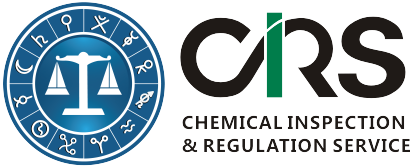
Narcotic Drugs and Drug Precursors
In China, the main legislation regulating precursor chemicals is the Regulations for The Administration of Precursors and Chemicals Used in Production of Narcotic Drugs and Psychotropic Substances, which came into force in Nov 2005.
The purpose of the legislation is to strengthen the administration of precursor chemicals, regulating the production, distribution, purchase, transportation and import and export of precursor chemicals, preventing precursor chemicals from being used in manufacturing drugs and psychotropic substances.
Catalog and Classification of Precursor Chemicals
The precursor chemicals are classified into three categories. Category I includes the major materials that can be used for producing drugs. Categories II and III include the chemical agents that can be used for producing drugs. The detailed classification and types of precursor chemicals are shown as below:
Category I
1. 1-phenyl-2-propanone
2. 3,4-Methylenedioxyphenyl-2-propanone
3. piperonal
4. safrole
5. sassafras oil
6. iso-safrole
7. n-acetyl o-amino benzoic acid
8. o-amino benzoic acid
9. ergotic acid*
10. ergotamine*
11. ergobasine*
12. ephedrine, pseudo ephedrine, mesoephedrine, phenylpropanolamine, methylephedrine, ephedrine extractum, ephedrine extractum powder and other ephedrine substances
13. 2-Chlorophenyl cyclopentyl ketone(new in 2012)
Category II
1. phenyl acetic acid
2. acetic oxide
3. chloroform
4. aether
5. piperidine
Category III
1. toluene
2. acetic oxide acetone
3. methyl ether ketone
4. polsassium permanganate
5. sulphuric acid
6. hydrochloric acid
Notes:
1. The saline chemicals that may exist in the substances as listed in Category I or II shall be brought into control.
2. The types marked with "*" are precursor chemicals under the item of pharmaceuticals in Category I, which include the pharmaceutical raw materials and the single preparation thereof
How to Comply
To comply with this legislation, you need to find out what your roles are and which category your product belongs to:
| Category | Regulation(updated in Oct 2011) |
|---|---|
| Category I |
|
| Category II |
|
| Category III |
|
About Us
Initially set up by China Inspection and Quarantine(CIQ) Bureau in 2007 to provide REACH compliance services to Chinese chemical industry, CIRS has grown to be a leading provider of comprehensive chemical compliance services for companies doing businesses in/with China.
Our services cover new substance notification, registration of the import and export of toxic chemicals, registration of hazardous chemicals, classification and labeling in according to China GHS, Chinese SDS, risk assessment of industrial chemicals, food additives and cosmetic ingredients. We provide one-stop solutions to your regulatory issues in China.We also deliver the most up-to-date regulatory information about chemical control laws in China.
- CIRS Europe
11F Building 1, Dongguan Hi-Tech Park, 288 Qiuyi Road, Binjiang District, Hangzhou 310052, China
Tel: +86-571 8720 6555 | Fax: +86-571 8720 6533
Email: service@cirs-reach.com - Mr. Eric Xiong, China Office
11F Building 1, Dongguan Hi-Tech Park, 1288 Chunbo Road, Binjiang District, Hangzhou 310052, China
Tel: +86-571 8720 6555 | Fax: +86-571 8720 6533
Email: eric.xiong@cirs-reach.com

